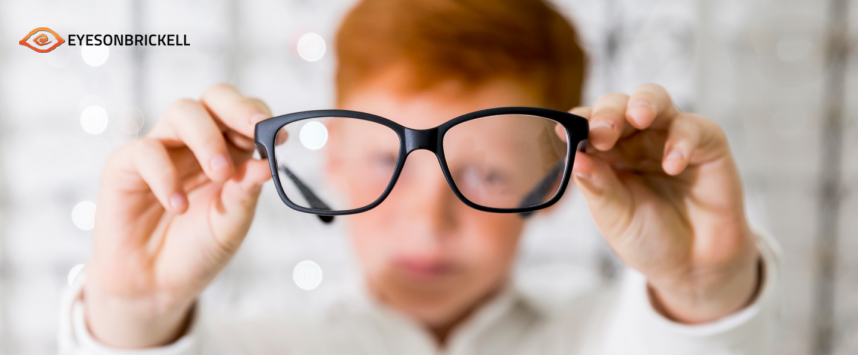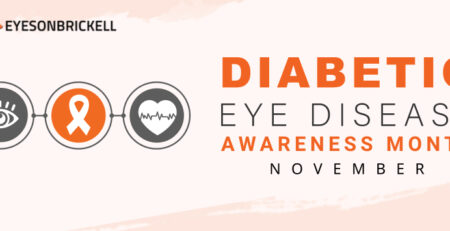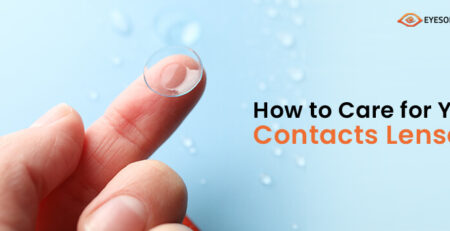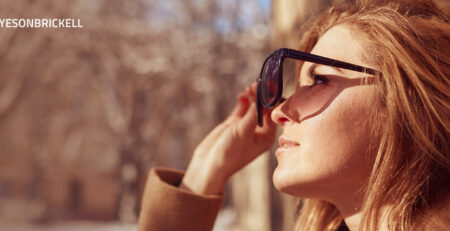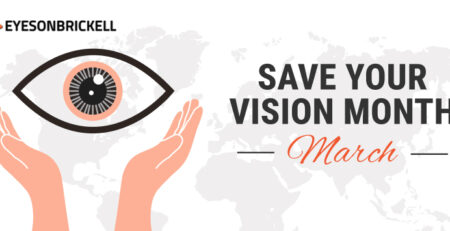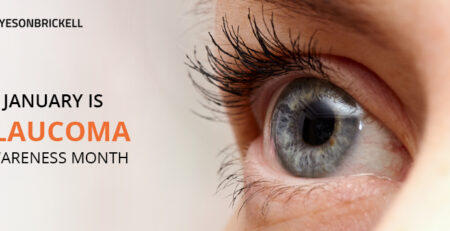A Guide to Myopia Management in Kids: Signs, Causes, and Potential Solutions
Is your child complaining about blurry vision when looking at objects far away? If so, this could be the sign of myopia, which is also known as nearsightedness. It occurs when the eye is unable to focus light properly, resulting in blurred distance vision.
It often starts during childhood and tends to progress as the child grows, making it important for parents to understand what myopia is and how to manage it.
Research from the American Academy of Ophthalmology indicates that children who spend more time indoors on near-focused activities—such as using computers, playing video games, or reading—tend to have higher rates of myopia compared to those who spend more time outdoors. This suggests that lifestyle factors play a significant role in the development of myopia.
However, we’ll discuss effective solutions for Myopia Management in kids. This guide will help you understand these options and make the best choice for your child’s eye health.
What is Myopia?
Myopia, or nearsightedness, is a common vision problem where you can see nearby objects clearly, but distant objects appear blurry. This occurs because light entering the eye focuses in front of the retina instead of directly on it. Myopia often begins in childhood and may get worse as you grow older.
It can make activities like driving or watching TV difficult without correction. Fortunately, myopia can be easily managed with glasses, contact lenses, or corrective surgeries like LASIK, helping you see clearly at all distances.
According to the prevent blindness organization– studies show that 4% of children 6 to 72 months old in the USA and also 9% of children between 5 and 17 are reported to have myopia.
Signs and Symptoms of Myopia in Children:
1. Squinting:
Children with myopia usually squint to clearly look at objects far away. Squinting helps temporarily focus their vision by reducing the amount of light entering their eyes. If your child often squints to look at something some distance away, such as a board in class or a television screen, this could be a sign of nearsightedness.
2. Sitting Near Screens:
Probably the most common sign of nearsightedness is children sitting extremely close to the television or holding books, tablets, or phones very close to their eyes. They sit closer because they cannot see objects clearly far away from them, and by sitting closer, they try to focus on the objects more clearly.
3. Complaints of Blurry Vision:
Children suffering from myopia may complain that they can’t see the board clearly in school or cannot read street signs while walking. They may report that distant things appear blurry. These complaints are a clear signal that their vision should be tested by an eye specialist.
4. Frequent Eye Rubbing:
If your child rubs the eyes very often, he or she may be suffering from myopia-induced eye strain. Lack of clear vision forces the eyes to work harder which makes them uncomfortable. Squeezing the eyes might also result from exhaustion from trying to see distant objects.
5. Headaches:
Another symptom is frequent headaches, often after activities involving focusing on objects that are far away. The tension associated with attempting to view objects distant can sometimes trigger tension headaches, particularly in the forehead and around the eyes, which can be a sign of a vision problem.
Causes of Myopia in Children:
1. Genetics:
Genetics or traits from parents play a big role in whether a child develops myopia. If both or one parents have myopia, then their child is more likely to get it too. It means that myopia can run in families and it’s a good idea to watch for signs in your children and schedule regular eye exams. Finding myopia early can help manage it and prevent it from getting worse.
2. Too Much Near-Sighted Work:
Too much near work, such as reading or computer use, potentially increases myopia in children. If children have to focus too much on things that are close to their eyes, it puts more strain on their vision as a result may develop myopia, causing the blurry appearance of distant objects. Encourage your child to take adequate breaks away from close-up activities and promote outdoor play to reduce his chances of becoming myopic and keeping his eyes healthy.
3. Lack of Outdoor Activity:
However, myopia is strongly related to the risk that children spend very little time outdoors. As kids spend most of their time outside, they read things appearing farther from their eyes, which exposes the eyes to more natural light hence keeping their eyes healthy.
This is not the case when children spend most of their time indoors concentrating on close-up work, for example, playing on computers and other screens. Play your child in an outside setting where they can see into the distance so that chances of getting myopia are lower while his vision is improved.
4. Eye Shape:
Myopia can result from the eye’s shape. Often in children, myopia results from an eyeball that is too long from front to back. This extra length makes light focus in front of the retina (the part of the eye that sees images), instead of directly on it. Distant objects appear blurry. This is just one reason that myopia develops, and often it is inherited. Hence, regular eye check-ups will allow an early detection of this and can be put into proper control.
Myopia Management Options to Protect Your Child’s Vision:
1. Prescription Glasses:
Myopia is usually treated with corrective glasses. The glasses change the way light enters the eye such that it is possible to focus the image of the distant object clearly onto the retina. Glasses are adjustable and can be customized to a child’s specific vision needs. It is a simple and effective solution, though some children may prefer the look or feel of contact lenses.
2. Contact Lenses:
Contact lenses remain on the surface of an eye, allowing a wider field of vision. There are different types of Myopia contact lenses; soft lenses ensure comfortability while rigid gas-permeable lenses are used for precise vision correction. Contacts will be appropriate for active children who tend to find inconvenience with glasses.
3. Orthokeratology (Ortho-K):
Ortho-K is the process of wearing rigid gas-permeable lenses overnight, reshaping the cornea slightly under where myopia as well as other sharper daytime vision occurs without glasses or contact lenses. Ortho-K, a type of myopia management contact lenses, is very useful for kids who don’t want to wear their contact lenses during the day, but it can also slow down the progression of myopia.
4. Atropine Eye Drops:
Atropine drops are used to manage myopia by reducing the eye’s ability to focus on close objects. This helps slow the rate at which myopia worsens. The drops are usually prescribed in low doses and are often combined with other treatments for better results. They are particularly effective in controlling myopia in children and can prevent significant vision deterioration.
Nearsightedness: Myopia Diagnosis and Treatment
- Visual Acuity Test: This is a test to check how well your child can see objects at different distances usually by reading letters on a chart.
- Retinoscopy: In this test, the doctor shines a light into the eye to see how it reflects off the retina, to check out the degree of nearsightedness.
- Refraction Test: To find the prescription that is best for the patient’s vision, the eye doctor uses a series of lenses.
- Slit-Lamp Examination: A specialized microscope; allows examination of the structures at the front part of the eye to ensure no other issues are causing blurry vision.
- Dilation Eye Exam: Eye drops enlarge pupils. This allows the doctor to see all around, inside the retina, and detect myopia or other conditions.
Schedule Your Child’s Eye Exam with Eyes on Brickell Today!
Understanding and managing myopia is essential for your child’s eye health and overall well-being. By recognizing the signs and exploring effective treatments, you can help your child see more clearly and enjoy their daily activities. For expert advice and personalized eye care services, consider visiting Eyes on Brickell. Their experienced team is dedicated to providing top-notch myopia management solutions tailored to your child’s needs.
Parents in Miami may trust the highly skilled eye care of Dr. Antoine Copty of Eyes on Brickell, who specializes in the diagnosis and treatment of child vision problems. So what are you waiting for? Book an appointment to provide your child with the best available vision treatment at 2885 SW, 3rd Ave Miami, FL 33129.

